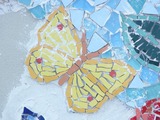
Butterfly adaptations are linked to Greek and Roman mosaics.
- Subject:
- Cross-Curricular
- Measurement and Geometry
- STEM/STEAM
- Visual Art
- Material Type:
- Lesson
- Author:
- Jamie Marquitz
- Amy Erb
- Candice Anthony-Cazenave
- Jessica Brown
- Date Added:
- 12/23/2020

Butterfly adaptations are linked to Greek and Roman mosaics.

Students lean about proportions, ratios, and unit rate. It is important for connections to be made among ratio tables, graphing points, and slope of a line. Students make these connections through the first activity provided by the VDOE. The second task by Illustrative Mathematics is a way to assess student understanding.

Buying and maintaining a car is a project designed to help students understand the financial implications and budgeting of purchasing and maintaining a car. This project was designed by Pam Spots of Powhatan County Public SchoolsEssential Knowledge, Skills, and Processes: Research, some math skills, and being able to find basic information on the internet. Primary SOL: DE.21
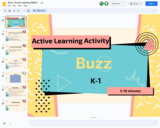
K.NS.1
1.NS.1
🎯 I Can Statement(s) 🎯
I can count from 1-100
I can skip count.
I can count forward orally by ones from 0 to 100.
I can count forward from any given number.
I can state the number before and after any given number.

The first lesson of two on Byzantine Empire, students evaluate various sites for a city that is in an ideal location to interact with the three continents bordering the Mediterranean basin. As students examine the local characteristics of the sites, they begin to consider the links between places. Even though the “ownership” of the site of Constantinople (Istanbul) has changed through time, its role as a crossroads has remained constant. Key questions: How does the location of Constantinople influence its ability to interact with the rest of the world? Why is Constantinople a strategic location?

This is the second lesson of two on the Byzantine Empire. Throughout the course of world history, borders have changed as various groups of people competed to control and rule territory and acquire resources. Throughout time, empires have expanded and collapsed. The Byzantine Empire once occupied the eastern portion of the Roman Empire with Constantinople as its capital, but yet disappeared from the map in 1453 when Constantinople became the capital of Ottoman Empire. Through an investigation of a series of map layers and examination of an interactive Web site, students discover how and why the borders of the Byzantine Empire changed through time. Key questions: What factors influence border changes? What are the effects of changing borders?
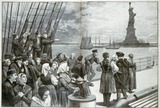
Students will answer the question: Did the American Dream come true for immigrants who came to New York? Students will analyze primary and secondary sources, synthesize new information, and answer the compelling question using evidence from the lesson. Students will use interactive simulations, videos, secondary sources, and primary sources as they engage in supporting questions throughout the lesson. By the end of the lesson, students will be able to explain why immigrants chose to emigrate to America, describe the process at Ellis Island, describe life in New York tenements, and explain how immigrants helped shape New York culture.This lesson is adapted from the Immigration Inquiry designed by C3Teachers.org: http://www.c3teachers.org/inquiries/immigration/
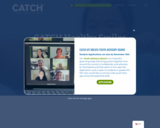
CATCH Healthy Smiles is a program for grades Pre-K – 2 that is designed to improve the oral health of students by teaching about and encouraging proper toothbrushing and flossing techniques, a nutritious diet, and regular visits to a dentist.
Through the program, students learn about the major factors that cause tooth decay and develop the skills needed to maintain a healthy smile. The CATCH Healthy Smiles program is designed to help students:
* Discover the causes of tooth decay, including dietary choices and poor oral health habits in our oral health education programs;
* Develop skills for brushing, flossing, and choosing tooth-healthy foods & drinks;
* Recognize the importance of regular dental visits; and,
* Create personal oral health care goals.
CATCH Healthy Smiles was developed by researchers at the Michael & Susan Dell Center for Healthy Living at The University of Texas Health Science Center at Houston (UTHealth) School of Public Health, with funding support from the National Institutes of Health.
Free C&C resources include in-class lesson plans, plug-n-play slides, learning videos, visual aids, and a professional development course for teachers. They were developed on a nonprofit basis with input from independent educators, academic copyright experts, and online civil liberties advocates.
These materials aim to provide accessible and practical information about copyright – its protections, its limitations, and its role in encouraging creativity. Rather than just emphasizing what copyright prohibits, the goal here is to offer useful and positive information about what copyright allows and how students can successfully navigate and rely on copyright in their own roles as creators.
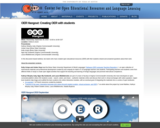
Description provided by COERLL:
COERLL hosted an online “OER hangout” on September 25th on the subject of creating open educational resources (OER) with students. With 26 people attending, five language instructors shared their experiences of working with their students to create openly licensed resources for teaching and learning:
Amber Hoye and Kelly Arispe lead the Boise State University Department of World Languages’ Pathways OER Language Teaching Repository of openly licensed proficiency based activities, created by students and teachers.
Kathryn Murphy-Judy, Ngoc-My Guidarelli, and Laura Middlebrooks are part of a team of faculty at Virginia Commonwealth University who have developed an open, connected platform for students to share authentic resources.
At Boise State, upper-level undergraduate students, with the mentorship of staff and faculty, create activities to be used in the weekly language lab component of introductory language courses. These activities can also be used in the classroom and K-12 teachers in Idaho have been involved in creating and teaching with them. At Virginia Commonwealth University, undergraduate students in the 202 class, who are either majors on their way to upper level courses or students finishing their language requirement, curate authentic resources and discuss them with native speakers. Then, upper level students turn those curations into instructional modules, which are being integrated into online open textbooks.
You can learn more about the logistics of these projects by viewing the webinar video, reading about the projects, and perusing the materials. Here, we’ll mention a few of the important themes that came up during the discussion.
One important element of students being involved in materials creation is that they understand what other students will be interested in and can choose topics and texts they know their peers will enjoy. Involving students ensures that a more diverse array of voices and perspectives are represented in the materials, and gives students more of a choice in their own education. Students also gain skills beyond language and culture when they work on these projects: digital citizenship, open license knowledge, technical skills, an understanding of language proficiency, and knowledge of state and national standards.
Each of these projects has a broad community of people with various skills who can support each other and contribute in different ways. At Boise State, the language resource center director, language students and students from other departments, faculty mentors, SLA & CALL researchers, K-12 teachers, state partners, and librarians have all contributed to the OER. At VCU, students, faculty, and librarians contribute to the materials and partnerships are developing with K-12 teachers who use the materials in their courses.
Each of these projects follows an iterative process of development. The work doesn’t start and finish in the span of a semester, it grows and changes. Students develop materials, native speakers proofread them, teachers teach with them, and the team refines them. The Pathways Project carries a disclaimer that “The activities on the Pathways Project OER Repository were created by upper-division students at Boise State University and serve as a foundation that our community of practice can build upon and refine. While they are polished, we welcome and encourage collaboration from language instructors to help modify grammar, syntax, and content where needed.” The cycle of the projects is such that lower-level students can get involved in the project as learners, but go on to take a more active role in the project as they progress.
The panelists recommend to anyone interested in creating OER with their students that they start small, and reach out to available communities (institution-wide, or online professional networks) for support and sharing. On that note, COERLL’s next OER hangout is on the topic of joining a teacher community. Join us on November 13th!
View the webinar video, links to the repositories, slides from the presenters, and more on the event page of COERLL’s website.
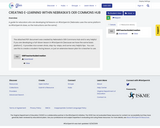
A guide for educators who are developing full lessons on #GoOpenVA (Nebraska uses the same platform as #GoOpenVA does, so the instructions are the same).
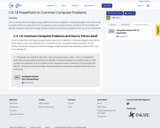
This is a PowerPoint that helps young students know how to identify a computer program and what to tell an adult so they can help them fix it. It is based on the Computer Science standard, 1.8: The student will identify, using accurate terminology, simple hardware and software problems that may occur during use.
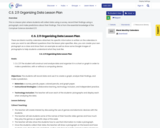
This is a lesson plan where students will collect data using a survey, record their findings using a pictograph, and make predictions about their findings. This is from the essential knowledge of the Comptuer Science standard 2.11.
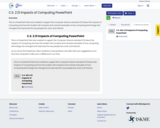
This is a PowerPoint that was created to support the Computer Science standard 2.13 about the Impacts of Computing and how the student will compare and contrast examples of how computing technology has changed and improved the way people live, work, and interact.
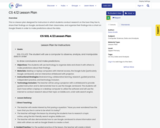
This is a lesson plan designed for instructors in which students conduct research on the town they live in, share their findings on Google Jamboard with their classmates, and organize their findings into a chart on Google Sheets in order to make predictions about the data.

This is a game from Gamilab where the player navigates across a map by answering questions related to the CS standard 5.16 regarding ethical online communications and cyberbullying.
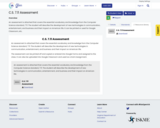
An assessment is attached that covers the essential vocabulary and knowledge from the Computer Science standard, 7.11: The student will describe the development of new technologies in communication, entertainment, and business and their impact on American life. It can be printed or used for Google Classroom, etc.
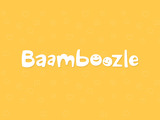
This resource contains a link to Baamboozle.com where a student can either play a game, watch a slideshow, or study with a set of flashcards from the vocabulary from the Computer Science standards 7.14 and 7.15.
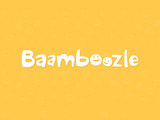
This is game designed on Baamboozle.com that is based on the Computer Science standard 7.6 in Cybersecurity where users must answer questions to distinguish the difference between a physical and a digital security measures.